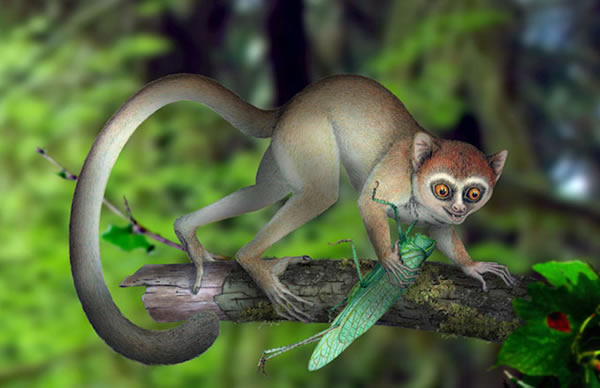Early Human Ancestor Primate Tiny, Scrappy
An artistic reconstruction of Archicebus achilles in its natural habitat of trees
The oldest known fossil primate skeleton, dating to 55 million years ago reveals that one of our earliest ancestors was a scrappy tree dweller with an unusual combination of features.
The discovery, made in central China's Hubei Province and reported in the journal Nature, strengthens the theory that Asia was the center of primate evolution. The new species, Archicebus achilles, also suggests that our earliest ancestors were very small.
"Archicebus was a tiny primate weighing less than 1 ounce," co-author Daniel Gebo of Northern Illinois University told Discovery News. "It would easily fit in the palm of your hand. Its eye orbits were not large, suggesting it was active during the daytime."
He added, "Archicebus likely bounced and climbed around the canopy, being entirely arboreal, looking for food items out on the terminal branches of trees. It had incredibly long legs and was an adept leaper. Think of little lemurs moving through the branches of trees within a rainforest setting."
Analysis, including state-of-the-art Synchrotron CT scanning, determined that the skeleton of Archicebus is about 7 million years older than the oldest fossil primate skeletons known previously, which include Darwinius from Germany and Notharctus from Wyoming.
The tiny primate lived close to the evolutionary divergence between the lineage leading to modern monkeys, apes and humans (collectively known as anthropoids) and the lineage leading to living tarsiers.
Gebo thinks the split might have happened as "each lineage tried to make themselves anatomically and ecologically different to avoid direct competition with each other, since this leads to extinction."
Given its root placement on the primate family tree, Archicebus had a mish-mash of characteristics.(Jun 5, 2013 01:00 PM ET // by Jennifer Viegas)












